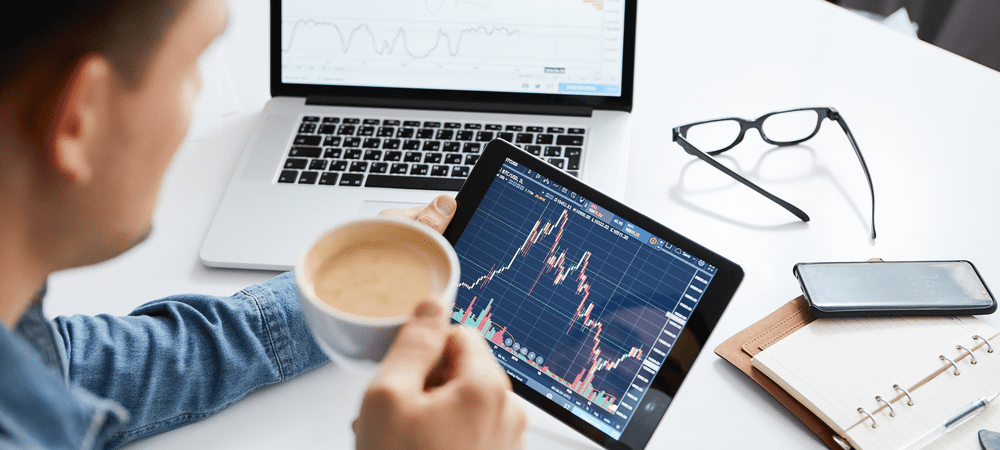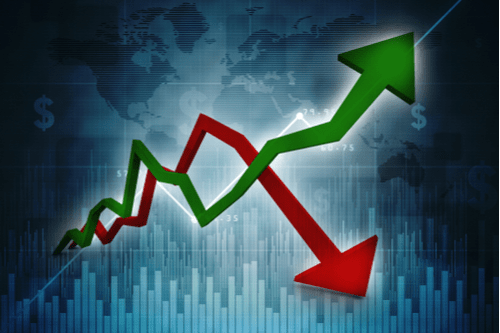CFD stock trading
When you buy a share , you buy a piece of the company. This means that with a share you have become a part owner of the company. The value of this share is determined by the value of the company. Is this value higher than the value that you had to pay when taking the shares? Then you make a profit. You can also choose not to trade in shares themselves, but to invest in the price fluctuations. This is also called CFDs on shares . With CFD trading you do not get shares in your possession.
Curious about these two different investment forms? In this article we discuss them.
The stock trade
The equity of a private limited company (BV) and a public limited company (NV) consists of shares. In a BV, the shares are registered and not freely transferable. This means that it is more difficult for you to acquire the shares of a BV. In an NV, the shares are bearer and these shares are freely tradable. This makes it easier for you to acquire shares of an NV than a BV.
Some NVs are listed on the stock exchange. This means that you can easily buy a share on the stock exchange , for example Shell. The price that you have to pay for such a share is determined by the stock market value. The stock market value is also called the current value, because this is the value of the company at this moment. Does the company make a lot of profit and are the future expectations of this company positive? Then the current value and therefore the stock market value will probably be high. Does the company make a lot of losses and are there gloomy future expectations? Then the current value, and therefore also the stock market value, will probably be low.
With stock trading you can make a profit when you have obtained (bought) a share for a cheaper price than you can sell the share. This is also called the long-term approach : you wait to sell the shares until the market value is higher than the price you had to pay for the shares. This way of investing is also seen as the traditional way.

CFDs on shares
You can also choose to trade in shares without actually owning the shares themselves. In this case, you do not trade in the shares themselves, but in the CFDs of the shares . When trading in CFDs, you trade in the price fluctuations (of the underlying instrument, in this case a share). While trading in shares itself is called the long-term approach , trading in CFDs on shares is called the short-term approach. This is because prices can fall or rise a lot in a short period of time. This makes trading in CFDs relatively risky: because prices can rise quickly, you can make a profit quickly, but this also means that prices can fall quickly, which can cause you to make a loss quickly.
The profit or loss is created by the difference in the price at the moment you open the CFD transaction and at the moment you close the CFD transaction. This is also called the price difference between the opening and closing price . Do you expect the price to rise? Then it is advantageous to buy a CFD transaction, because you expect to pay less for it now than in the future. This is also called opening a long position . On the other hand, do you expect the price to fall? Then you can also respond to this with a CFD. If you expect the price to fall, you can open a short position to respond to the fall.
With CFDs you trade with leverage . This means that you can take a larger position than you put in yourself. Your leverage can increase your profit considerably, but conversely your loss can also be greater.
Example of a larger position with CFD shares
For example: Tesla shares are at a price of €75.50 / €75.52 (selling price / buying price). You assume that the price will rise and therefore take a long position of 100 shares. When trading with a CFD, you only have to put in a part yourself (depending on the margin) in this example we take a margin of 5%. So you only have to pay 5% x €75.52 x 100 = €377.60. With traditional share trading, this would have been €7,552 (75.52 x 100).
What factors determine the price of a share?
There are various factors that can cause the price of a share to fall or rise. For example, consider the turnover that a company has achieved or the profits that a company has made. When you buy a share, you are not only buying a part of a company, you are also buying the right to receive a piece of the profit. This is also called the dividend payment . Read more about dividend here .
So when a company makes a lot of profit, there is a lot of profit to distribute, which means that the dividend payout to shareholders can be higher. This makes the share more valuable.
If a company makes a lot of losses, there is generally little left to pay out to shareholders. This causes the value of the share to fall.
The value of a share is also determined by future expectations . A favorable future expectation generally ensures that the value of a share is higher than with a negative future expectation. So always look around you and keep a close eye on the news! News reports can also influence prices.

Should you trade CFDs or the shares themselves?
As mentioned above, you have a choice between two different investment forms. Do you want to trade in the shares themselves? Or do you want to trade in the prices of the shares?
If you want to trade in the prices, you trade in CFDs . Do you want to trade in the shares themselves? Then this is also called traditional stock trading .
But what exactly are the differences?
CFDs on stocks vs. traditional stock trading
Stamp duties
In some countries you have to pay a tax on certain documents. This payment is confirmed by means of a stamp. These are also called stamp duties: you buy the right to issue a stamp. CFDs do not have stamp duties. Shares unfortunately do have stamp duties, so you often have to pay 0.5% tax on the transaction.
Profit in both directions
With CFDs you can profit from both a falling and a rising price. Do you expect the price to rise? Then it is attractive to open a long position and buy a CFD. Do you expect the price to fall? Then it is attractive to open a short position. With shares you can only make a profit when the prices rise. Do the prices fall and you trade in the shares themselves? Then unfortunately you cannot profit from this and it will only have a negative effect.

In which categories can you invest?
When investing in shares, it may be logical that you can only invest in shares ( ETF or fund with shares is also possible). However, when investing in CFDs, you can invest in all kinds of different underlying instruments. These financial instruments can be shares, but also commodities, bonds or indices.
When can you invest?
Investing in shares is only possible when the stock exchange is open. This means that you are dependent on the opening hours of the stock exchange . When trading in CFDs, you have a great opportunity: you can invest in CFDs every hour and you can invest in different markets.
Shareholder rights
When trading CFDs, you do not receive shareholder rights. This may also be logical, because you do not trade in the shares themselves and therefore do not own the shares themselves. When trading in the shares themselves, you do receive shareholder rights. For example, think of the right to a dividend payment when the company makes a profit.
For the long or short term?
CFD trading is more suited to short to medium term trading, as prices rise and fall quickly. Stock trading itself is more suited to long term trading. This is because you often wait until the price has risen high enough so that you can sell the shares at a profit.
Costs to keep your position open
When trading CFDs, you often have to pay extra costs if you want to keep the position open overnight. With shares, you do not have to pay extra costs for this.
CFD Trading vs. Stock Trading: Which is Cheaper?
When you trade in CFDs, you only have to pay the margin . That is why CFD trading is also seen as ‘margin trading’. This means that you only have to pay a small part of the total value. This gives you, compared to traditional stock trading, a larger position for the same amount of money that you have to pay. With traditional stock trading, you have to pay all costs before you receive the share. The advantage here is that with traditional stock trading you are certain that you can absorb the loss with your capital. With CFDs, you do not pay the full costs, which can mean that you can suddenly end up with a large loss. Be careful that you can absorb this loss with your capital.
Do you want to start investing in CFDs on shares? Then view and compare the range of CFD brokers .